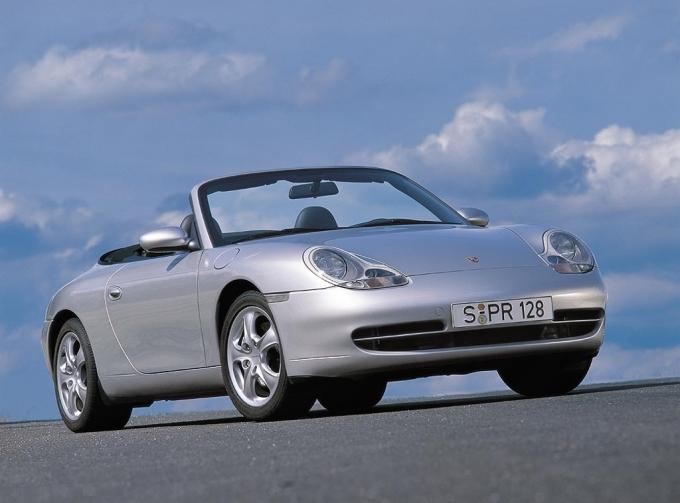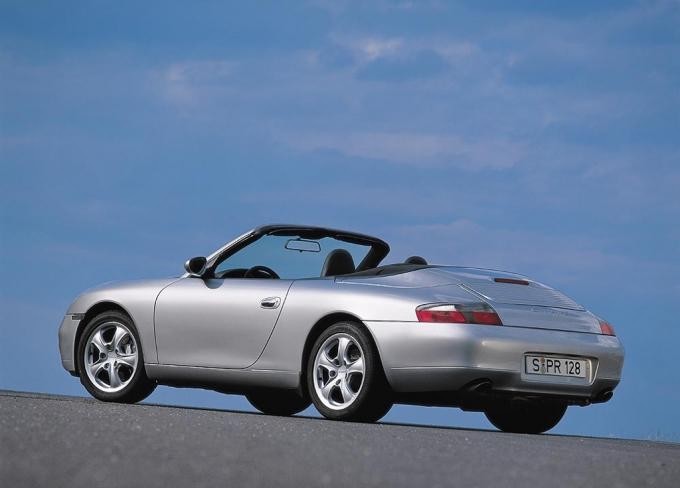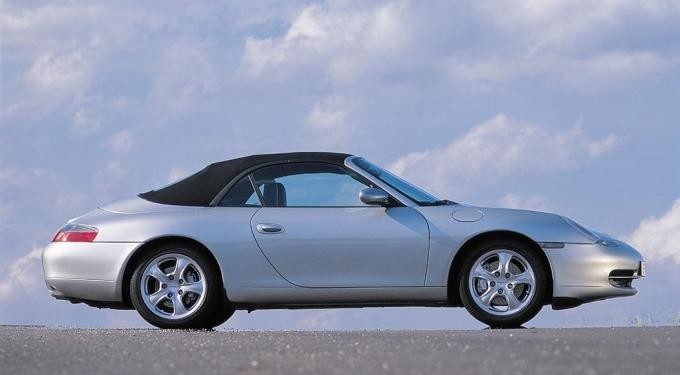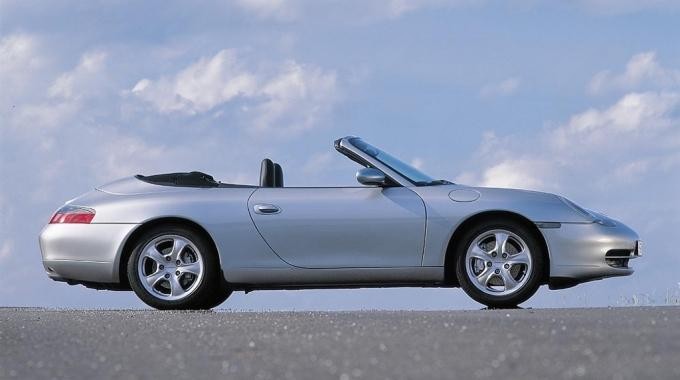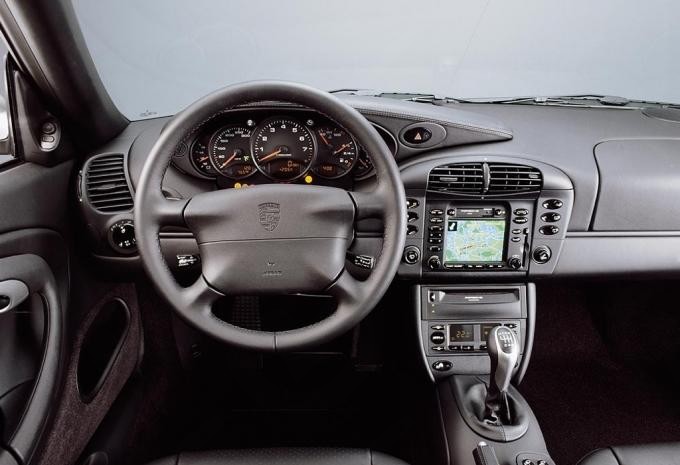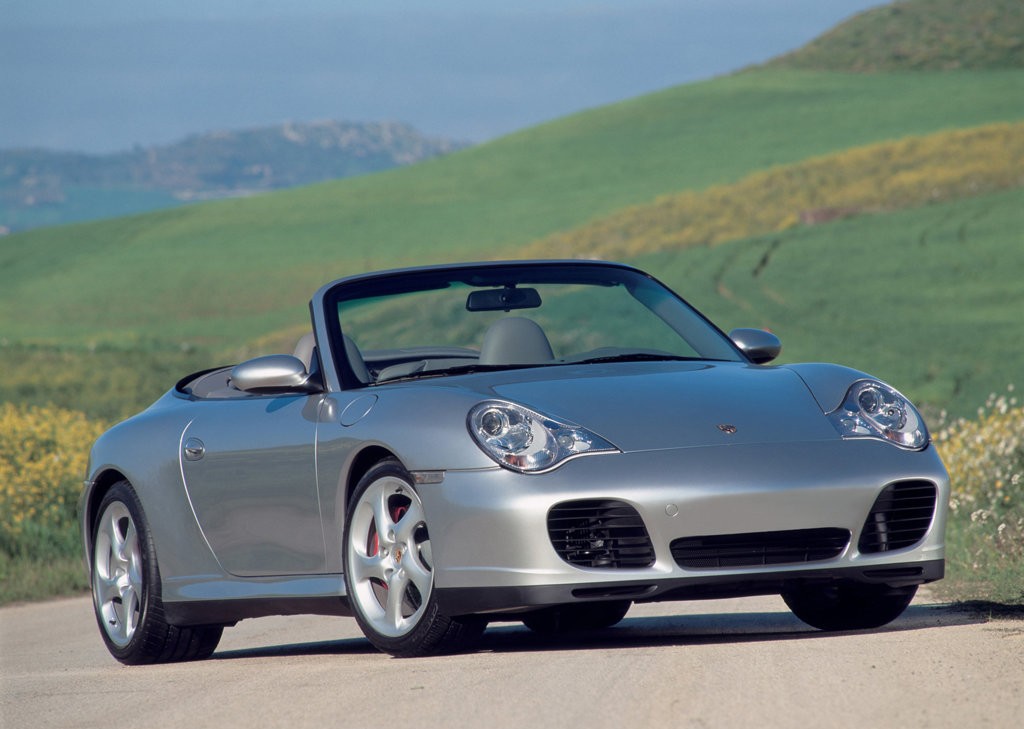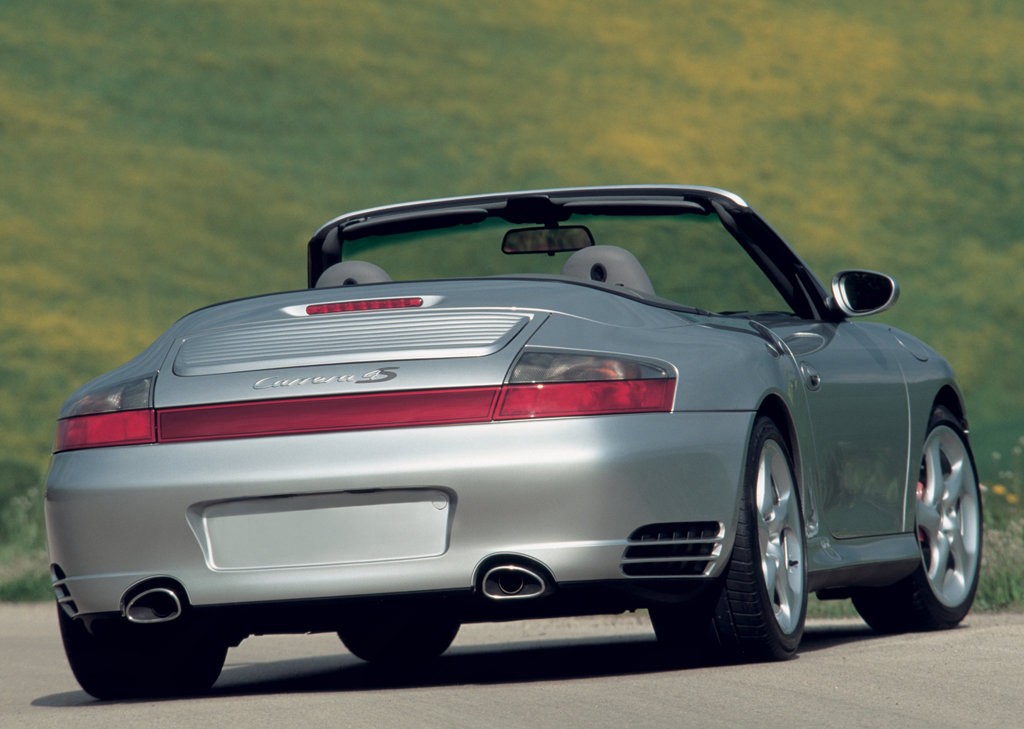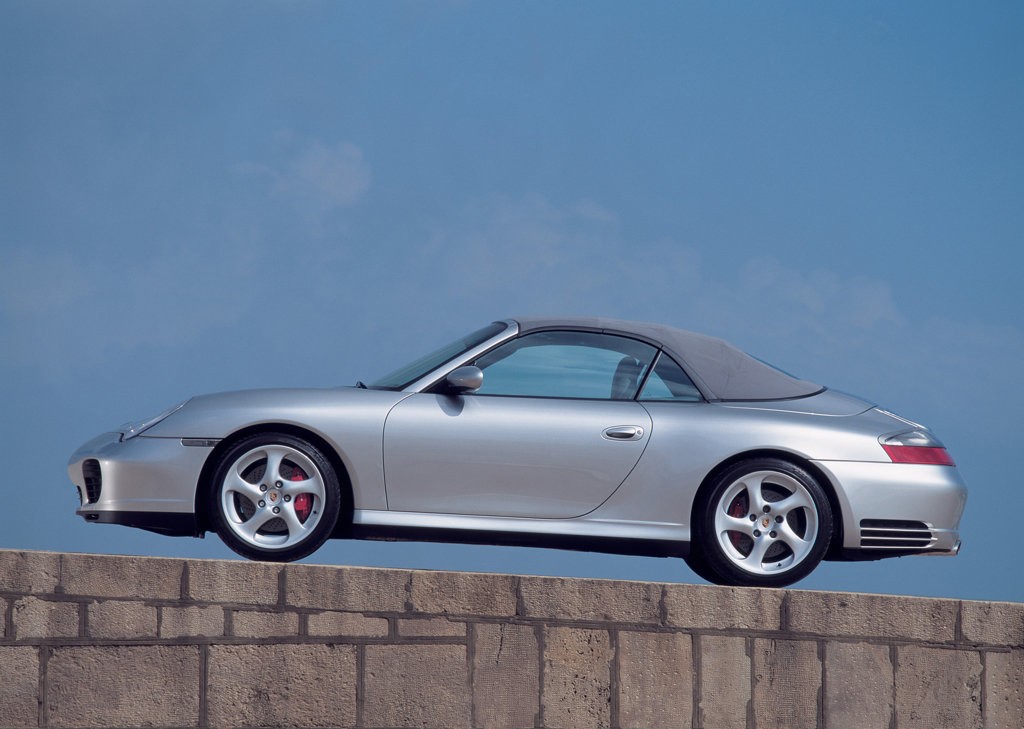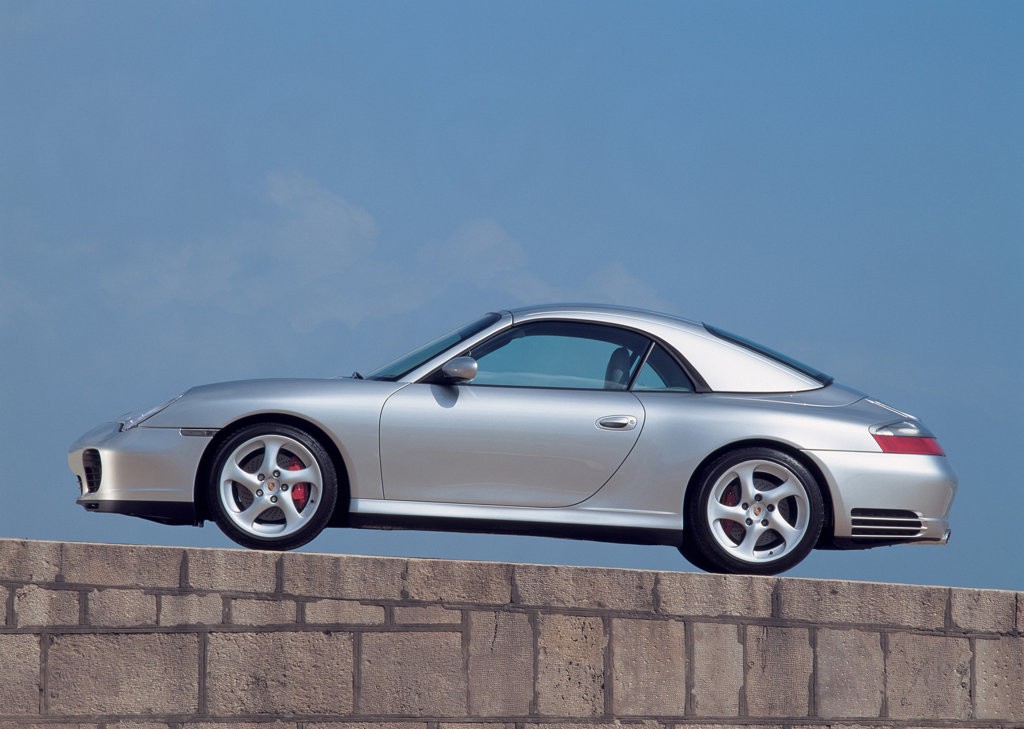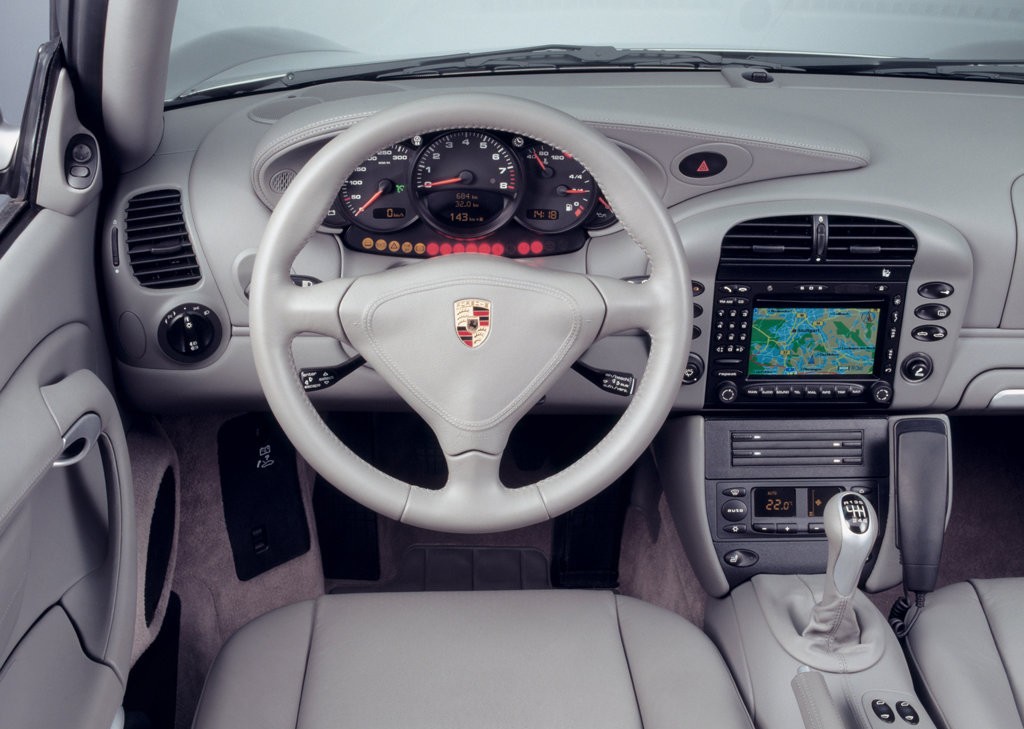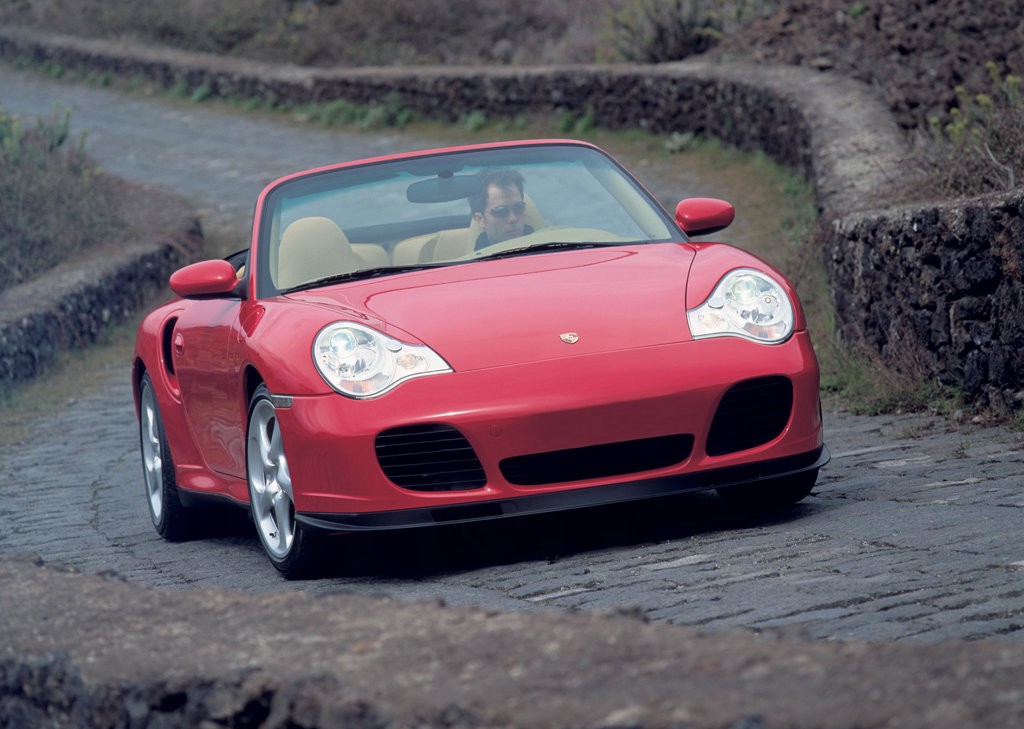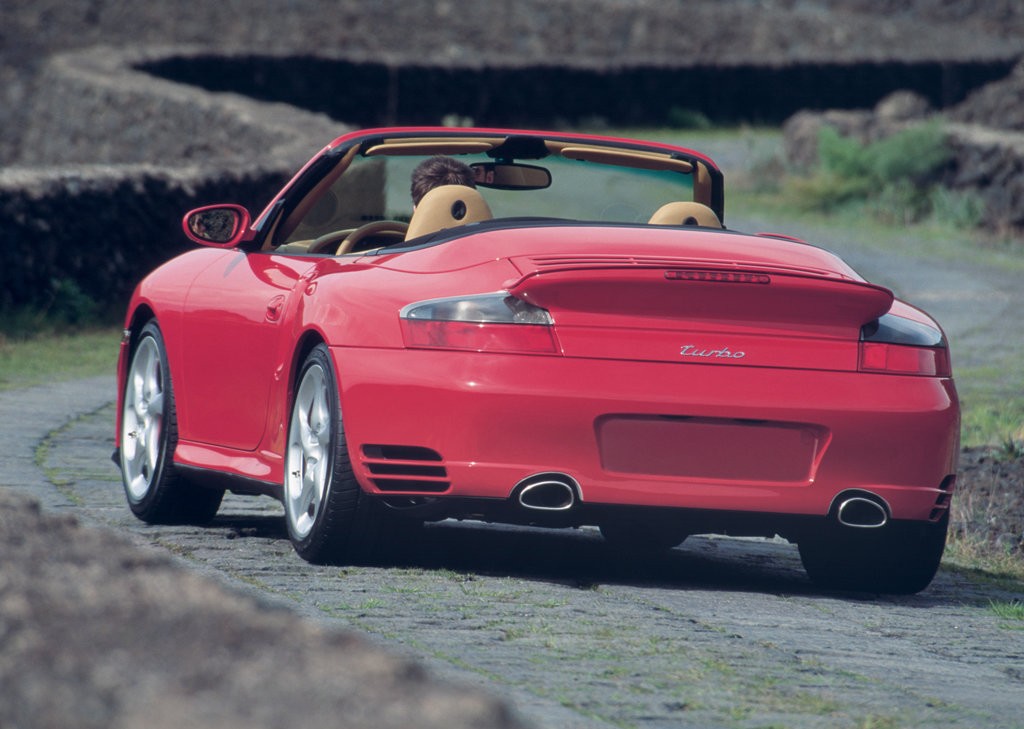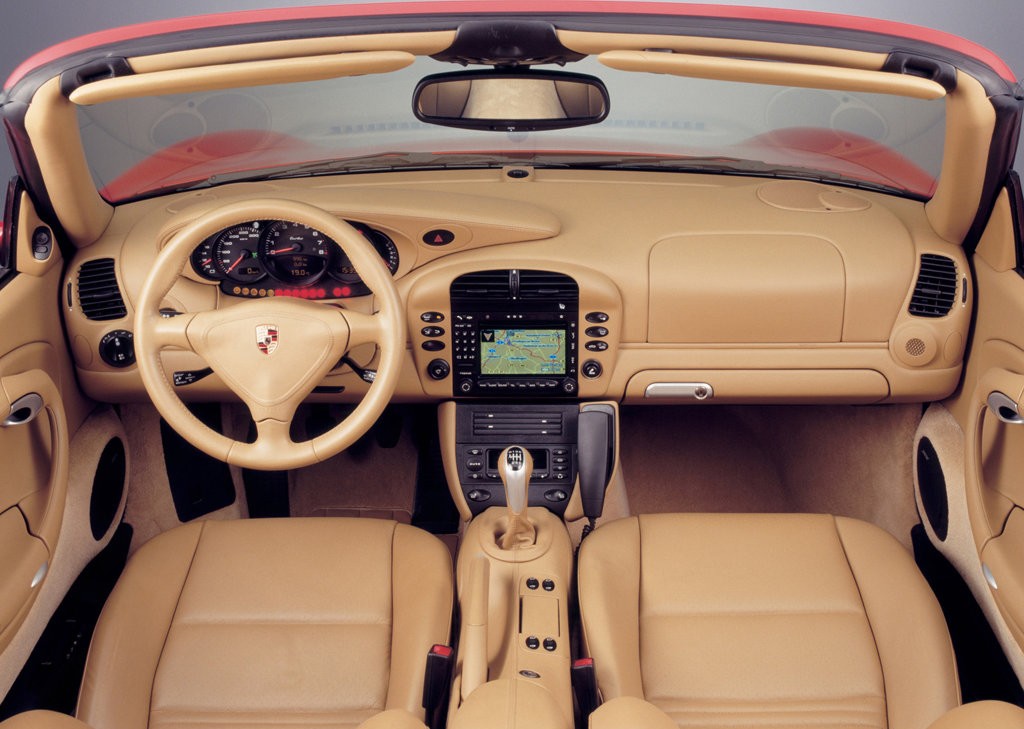
- Free-revving flat six-cylinder engines sing sweetly
- Impressive dynamics
- Well-weighted steering provides excellent feel
- Responsive brakes
- Front seats provide excellent lateral support…
- … but are narrow around the shoulders
- Suspension lacks compliance
- Wind noise at higher speeds
- For manual transmissions, stiff clutch
- Tiptronic transmission blunts performance
- Intermediate Shaft (IMS) bearing susceptible to failure
Review: Porsche 996.I 911 Cabriolet (1998-01)
Overview
Released in December 1998, the Porsche 996 Series I (996.I) 911 Cabriolet was a two-door convertible with a soft-top roof. Manufactured in Stuttgart, Germany, the 996 911 Cabriolet range consisted of rear-wheel drive Carrera and all-wheel drive Carrera 4 variants. Both variants, however, were powered by 3.4-litre horizontally-opposed six cylinder petrol engines that were mated to either six-speed manual or five-speed automatic transmissions.
Engines
The Carrera and Carrera 4 were powered by 3.4-litre flat (or horizontally opposed) six cylinder engines which featured liquid-cooling (previously air cooled), double overhead camshafts, four valves per cylinder and Porsche’s VarioCam Plus variable intake valve timing system with two-stage valve lift.
Dimensions and body
Compared to the 993 911 Cabriolet , the 996 911 Cabriolet was 185 mm longer (at 4430 mm), 30 mm wider (1765 mm), 5 mm taller (1305 mm) and had a 78 mm longer wheelbase (2350 mm).
The 911 Cabriolet’s electrohydraulic, soft-top roof could be opened or closed in twenty seconds via a button on the centre console or turning the key in the door lock. The 911 Cabriolet was also sold with an aluminium hardtop – with a heated glass rear window – as standard.
Suspension
The 993 911 Cabriolet had MacPherson strut front suspension with aluminium lower control arms and five-link rear suspension which was mounted to an aluminium subframe.
| Variant | Drive | Engine | Trans. | Peak power | Peak torque |
|---|---|---|---|---|---|
| Carrera | RWD | 3.4-litre M96.01 petrol F6 | 6sp man., 5sp auto |
221 kW at 6800 rpm | 350 Nm at 4600 rpm |
| Carrera 4 | AWD |
AWD system
The Porsche 996 911 Carrera 4 was fitted with an all-wheel drive which utilised a viscous multi-plate clutch behind the front differential. In normal conditions, only five per cent of the engine’s torque was directed to the front axle. If wheel slip occurred, however, the viscous coupling would act to direct up to 40 per cent of the engine’s torque to the front axle.
Safety equipment
Standard safety equipment for the Porsche 996.I 911 Cabriolet included dual front airbags, front seat-mounted side airbags (providing head, chest and hip protection) and ABS. The Carrera 4 variants were further equipped with Porsche’s Stability Management (PSM) system which consisted of traction control and electronic stability control.
The 911 Cabriolet was also fitted with two rollbars positioned behind the rear seats which would be actuated by spring pressure if a sway sensor determined that the vehicle was at risk of rolling over.
Features
Standard features for the 911 Carrera and Carrera 4 included 17-inch alloy wheels, a ten speaker sound system with CD player, climate control air conditioning, leather seats, power adjustable front seats, cruise control, front fog lights, leather-wrapped steering wheel and gearshift, remote central locking, power windows and mirrors, telescopic steering wheel adjustment, a trip computer, an alarm and immobiliser.
Review: Porsche 996.II 911 Cabriolet (2001-05)
Overview
Released in August 2001, the 996 Series II (996.II) 911 Cabriolet introduced a revised range as the Carrera 4 was discontinued, while Porsche also claimed that the body structure was strengthened. In November 2003, the range was expanded with the introduction of the Carrera 4 S and Turbo variants; in 2005, a limited number of Turbo S variants were released.
Engines
Significantly, engine displacement was increased from 3.4- to 3.6-litres and the VarioCam Plus valve timing and lift system was adapted to provide continuously adjustable valve timing; the system also incorporated two camshaft profiles and two sets of tappets to vary both valve lift and duration for a broader spread of torque. The Carrera variants were also fitted with the Tiptronic S transmission from the 996.I 911 Turbo which was rated for higher torque applications than the previous automatic transmission. The Tiptronic S had a sequential shift mode in which gearshifts could be controlled via steering wheel-mounted thumb switches.
Identification
Visually, the 996.II 911 Cabriolet could be identified by its new headlights (previously introduced with the 996.I 911 Turbo), revised front end, widened rear quarter panels and redesigned oval exhaust outlets; the polycarbonate rear window was also replaced with a glass rear window with integral defroster. Furthermore, changes to the body improved cooling of the brakes, radiator and transmission cooling, while also reduced lift.
Inside, the instrument panel from the 996.I 911 Turbo was adopted throughout the range, including the on-board computer which had an LCD in the tachometer; other changes included a three-spoke steering wheel, redesigned centre vents, lockable glove box and cup holder integrated in the centre of the dashboard.
| Variant | Years | Drive | Engine | Trans. | Peak power | Peak torque |
|---|---|---|---|---|---|---|
| Carrera | 2001-05 | RWD | 3.6-litre M96.03 petrol F6 | 6sp man., 5sp auto |
235 kW at 6800 rpm | 370 Nm at 4250 rpm |
| Carrera 4 S | 2003-05 | AWD | ||||
| Turbo | 2003-05 | AWD | 3.6-litre M96.70 twin-turbo petrol F6 | 6sp man., 5sp auto |
309 kW at 6000 rpm | 560 Nm at 2700-4600 rpm |
| Turbo S | 2005 | AWD | 3.6-litre M96.70 twin-turbo petrol F6 | 6sp man., 5sp auto |
331 kW at 5700 rpm | 620 Nm at 3500-4500 rpm |
Safety equipment
Compared to its 996.I predecessor, standard safety equipment for the 996.II 911 Carrera was extended to include front seatbelt pretensioners and load limiters.
Features: 911 Carrera
Compared to its 996.I predecessor, standard features for the 996.II 911 Carrera were largely unchanged.
Features: 911 Carrera 4 S, Turbo and Turbo S
Compared to the Carrera, the Carrera 4 S was fitted with 18-inch alloy wheels and had a 60 mm wider rear end to accommodate its 295/30 R18 rear tyres. Visually, the Carrera 4 S and Turbo could be identified by their three large, dark-finish intake grilles and red-painted brake calipers. The Carrera 4 S also had a glass-reinforced plastic rear deck lid with a reflector strip between the tail-lights.
The Turbo was further equipped with an eleven speaker Bose sound system with six-channel amplifier, bi-xenon headlights with washers, rain-sensing wipers and an electrochromatic rear view mirror.
The Turbo S was fitted with the optional X50 engine enhancement package that had been previously available for the Turbo, resulting in 22 kW and 60 Nm increases to peak power and torque. The Turbo S was also fitted with a ceramic composite braking system which included cross-drilled 350 mm front and rear brake discs. The Turbo S also had unique bodywork for enhanced aerodynamics and improved engine and brake cooling.
Related links
